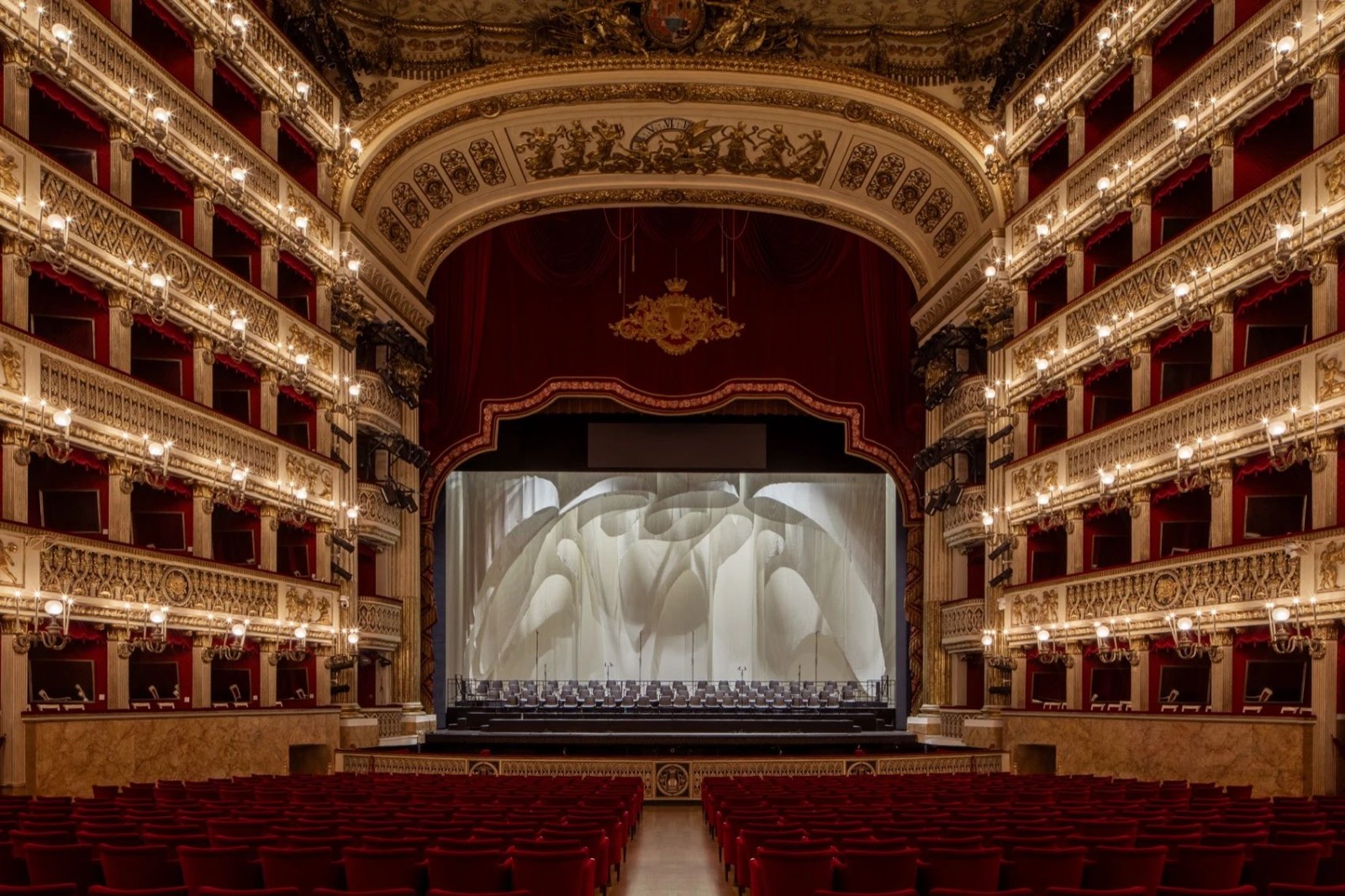【建筑】隈研吾 X 加州大学伯克利分校丨生长的巢穴 首
2022-03-14 22:28
为了应对国际设计建造竞赛,我们的团队提出了一种典型的加州方法,其中包含许多对我们大多数人都来自亚洲的新想法。这些加利福尼亚的想法形成了我们成长的巢,它源于对构成我们建筑环境的材料的共同兴趣,重点是可再生材料。
In response to an international design-build competition, our team proposed a quintessentially Californian approach embracing many ideas still new to Asia, from where most of us hail. These Californian ideas formed into Nest we Grow, which grew from a shared interest in the materials that make up our build environment with a focus on renewable materials.
Nest We Grow 在 2014 年赢得了第四届骊住国际设计建造竞赛,与竞赛头几年建造的结构不同,它是一个开放的公共结构。其主要目的是将社区中的人们聚集在一起,在日本北海道的环境中储存、准备和享用当地食物。
Nest We Grow won the 4th Annual LIXIL International design-build competition in 2014, and unlike structures built in the first years of the competition, it is an open, public structure. Its main intent is to bring people in the community together to store, prepare and enjoy local foods in the setting of Hokkaido, Japan.
我们的研究生团队由四名中国人和一名美国人组成,他们试图研究我们可以结合哪些结构和材料元素来创建这个以社区和食物为导向的空间。我们认识到伯克利是如何庆祝适度的材料和行动,并希望探索它们在亚洲的影响。
Our team of graduate students, comprised of four Chinese, and one American, sought to examine what structural and material elements we could combine to create this community and food oriented space. We recognized how modest materials and actions are celebrated in Berkeley and wanted to explore their implications in Asia.
我们最初的研究是从我们在加利福尼亚很容易找到的技术开始的,包括夯土墙和草捆建筑。我们提出了这些想法,以寻求将可再生建筑技术引入日本地区的建筑,从而可以利用这些概念。我们发现对在新环境中应用跨国技术的难度表示赞赏。
Our initial research started with techniques we find readily in California, including rammed- earth walls and straw bale construction. We presented these ideas in pursuit of a building that would introduce renewable building techniques to an area of Japan that could take advantage of these concepts. What we found was an appreciation for the difficulty of applying transnational technology in a new environment.
我们还专注于来自美国的重型木材建筑技术,该技术使用大量木材。在日本,这转化为复合柱,它使用较小的木块来生成更大的柱。确定一种连接材料的方法需要付出相当大的努力,这受到当地木工实践和日本材料市场的影响。我们也受到相当长的时间限制,整个建造过程只需要六个月才能完成。
We also focused on a heavy timber construction technique coming from the US, which uses large sections of wood. In Japan this translated to the composite column, which uses smaller pieces of wood to generate a larger column. It took considerable effort to identify a way to join materials, which was influenced by both local carpentry practices and the Japanese material market. We were also under a considerable time constraint with the entire building process taking only six months to complete.
木框架结构模仿日本落叶松林的垂直空间体验,食物悬挂在其中生长和干燥。巢穴中间的茶台创造了一个聚集空间,社区可以在下沉式壁炉周围视觉和身体上享受食物。当人们看到漂浮在地形之上的食物森林时,当地食物构成了鸟巢的高度。
The wood frame structure mimics the vertical spatial experience of a Japanese larch forest from which food is hung to grow and dry. A tea platform in the middle of the nest creates a gathering space where the community can visually and physically enjoy food around a sunken fireplace. Local foods make up the elevation of the Nest as people see the food forest floating above the landform.
建筑物底部的墙除了创造微地形外,还有助于阻挡盛行的西北冬季风。巢利用立面和屋顶上的透明塑料波纹板,为植物提供光线,并在寒冷的月份加热空间,扩大巢的可用性。
The wall at the base of the building, in addition to creating a micro topography, helps to block the prevailing northwest winter wind. The Nest takes advantage of the transparent plastic corrugated sheets on the façade and roof, allowing light in for the plants, and heating the space during colder months, extending the usability of the Nest.
立面和屋顶上的滑动面板打开,以促进夏季和白天温暖部分空气通过结构的流动。茶台坐落在巢中,在寒冷的月份将其保持在由皮肤产生的温暖空气中,并在温暖的夏季保持在交叉通风的区域。
Sliding panels in the façade and roof open to facilitate air movement through the structure during the summer and warmer parts of the day. The tea platform sits up into the Nest, keeping it in the warm air created by the skin during the colder months, and in a cross ventilated area during the warm summer months.
立面的开放性使建筑物能够将周围的自然环境融入室内气候,但也可以关闭以在两者之间建立缓冲。漏斗形屋顶收集雨水和融雪。收集的水被输送到水箱中,然后用于灌溉混凝土墙中的植物。形状表明鸟巢能够以空气、水和光的形式将自然带入鸟巢。
The openness of the façade allows the building to incorporate the surrounding natural environment into the interior climate, but can also be closed off to create a buffer between the two. The funnel-shaped roof harvests rain water and snow melt. The collected water is delivered to tanks that are then used to irrigate the plants in the concrete wall. The shape signifies the Nest’s ability to bring nature in the form of air, water and light into the Nest.
Nest的程序是根据这些当地食物的生命周期决定的:种植、收获、储存、烹饪/用餐和堆肥,从而重新开始循环。社区的所有成员帮助完成每个阶段,使该结构成为全年在巢中进行小组学习和聚会活动的平台。社区参与延伸并完成了当地食品的生命周期,这是一种共生关系。这是巢中人和食物的时间线,这是人和食物的巢。
The program of the Nest is decided according to the life cycle of these local foods: growing, harvesting, storing, cooking/dining, and composting, which restarts the cycle. All members of the community help to complete each stage, allowing the structure to become a platform for group learning and gathering activities in the Nest throughout the year. Community participation extends and completes the life cycle of local foods, which is a symbiotic relationship. This is the time-line of people and food in the Nest, and this is the Nest for people and food.
建筑师丨加州大学伯克利分校环境设计学院,隈研吾建筑工作室
Architects丨College of Environmental Design UC Berkeley, Kengo Kuma - Associates
项目地址丨Hokkaido, Takinouegenya, Takinoue, Monbetsu District, Hokkaido Prefecture 099-5600, Japan
Address丨Hokkaido, Takinouegenya, Takinoue, Monbetsu District, Hokkaido Prefecture 099-5600, Japan
Photographs丨Shinkenchiku Sha
Contractor丨Takahashi Construction Company
机械工程师丨Tomonari Yashiro Laboratory at the Institute of Industrial Science, Bumpei Magori, Yu Morishita
Mechanical Engineer丨Tomonari Yashiro Laboratory at the Institute of Industrial Science, Bumpei Magori, Yu Morishita
采集分享
 举报
举报
别默默的看了,快登录帮我评论一下吧!:)
注册
登录
更多评论
相关文章
-

描边风设计中,最容易犯的8种问题分析
2018年走过了四分之一,LOGO设计趋势也清晰了LOGO设计
-

描边风设计中,最容易犯的8种问题分析
2018年走过了四分之一,LOGO设计趋势也清晰了LOGO设计
-

描边风设计中,最容易犯的8种问题分析
2018年走过了四分之一,LOGO设计趋势也清晰了LOGO设计































































































